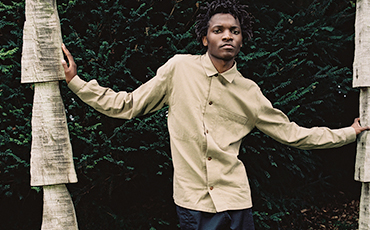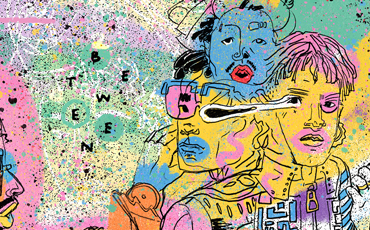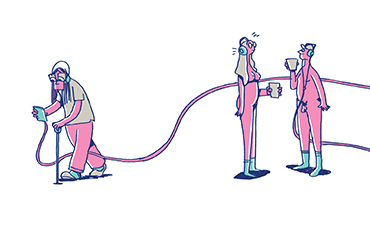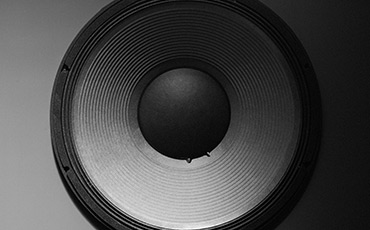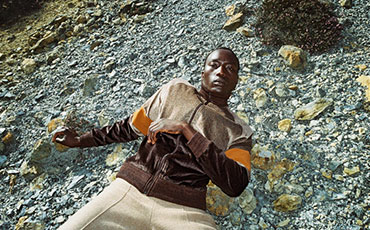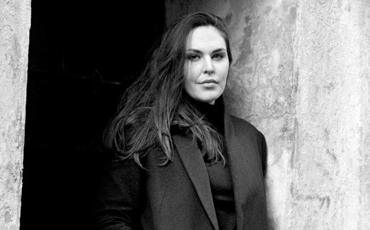04: Culture
Crossing the Streams
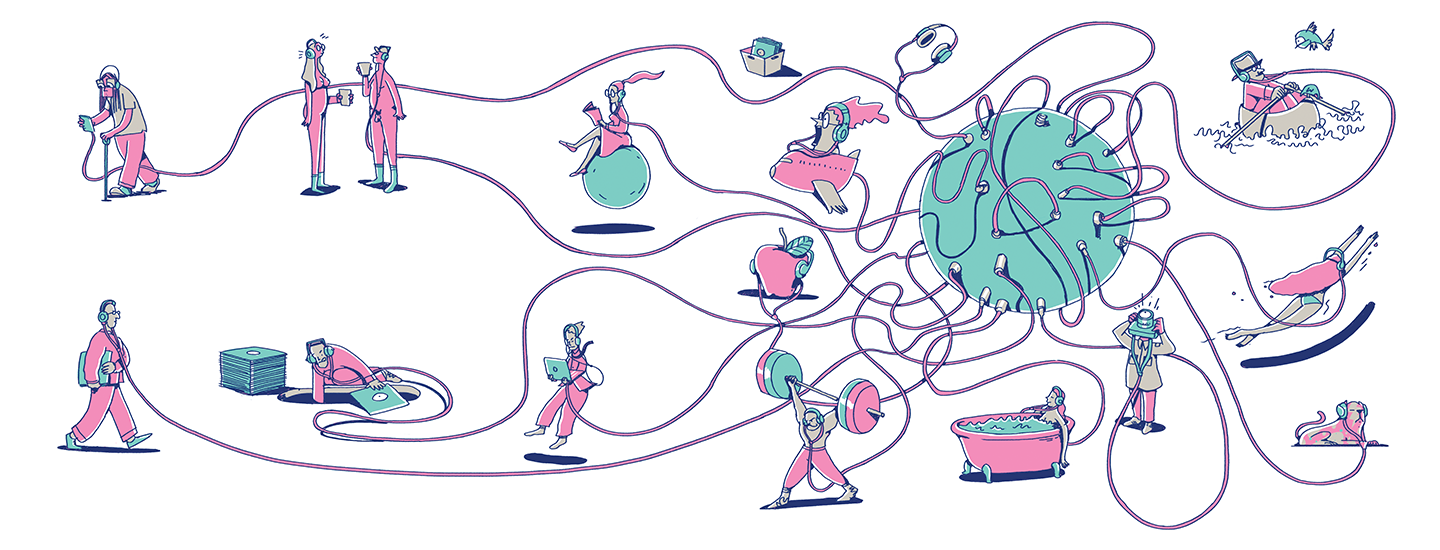

You can purchase music anywhere and everywhere. Mark Hooper investigates the democratisation of music buying.
Words by Mark Hooper
Illustration by Chris Martin
Is music’s demographic shifting? In pop’s early, nascent years in the 1950s, the clichéd model of success was shadowy svengalis targeting and manipulating the emotions of a teenage female audience. As the music evolved and matured over the next few decades, so did its imagined audience – with the long-player subsuming the three-minute single as the key product in the market. Of course, in terms of business, it helped that this preferred medium was the more expensive option – and as technology advanced, it found new ways to charge more for it.
This trend reached its zenith/nadir (according to your point of view) with ‘50-Quid Bloke’, as defined by David Hepworth, one of the founders of music title the Word, in a speech to the BPI in 2003: “This is the guy we’ve all seen in Borders or HMV on a Friday afternoon,†he said, “possibly after a drink or two, tie slightly undone, buying two CDs, a DVD and maybe a book – fifty quid’s worth.â€
The choice of gender was significant. This notional music-buying audience, older, more established, with disposable income to splash out on boxsets, was imagined to be a bloke: with the record store itself regarded as a something of a male domain. “I think what streaming has done is to kill that ‘collector’ mentality, which was not exclusively male, but had the scent of male about it,†says Eamonn Forde, music business writer and analyst for Music Ally. “Historically, it was very much ‘boys only: girls stay out’… and what you’re finding across the board is streaming has liberated that.â€
This is an important point. It’s not that there wasn’t a female audience out there – or that they weren’t incredibly knowledgeable about music, but rather, as Forde puts it, “the social sphere of buying music was a very male thingâ€. Fast forward 15 years and when we look at the online record-store environment, it’s a more democratic and less gendered experience. The latest IFPI figures show that, globally, 83% of male YouTube users listen to music on the service regularly, against 81% of female users. The demographic also skews heavily towards the younger end of the market – with 93% of 16-24-year-olds versus 69% of 55-64-year-olds.*
The 50-Quid Bloke may still be out there, but the market is changing, so his core ‘safe space’ – the physical record store – is becoming a smaller part of the landscape. A 2015 RAJAR study shows that, while live radio still dominates our listening habits (with a 74.4% share of our ‘audio time’), digital has overtaken traditional formats: 8.2% of our time is spent listening to digital tracks, and on-demand music services take up 5.6%, compared to 5.1% for CDs (cassette and vinyl bringing up the rear with 0.4%).**
“In my day-to-day I work a lot on assumptions about older males or ‘£50 Bloke’†says Mark Wood, Marketing Manager at UMC (catalogue division at Universal Music) who has overseen recent best-selling boxset re-releases for acts as varied as Genesis, Marc Almond and Dusty Springfield. Although catering for the streaming audience is a significant part of his job, for Wood, the emphasis is slightly different.
“It is something we build into every campaign although we know streamers are a younger audience than for high-end physical,†he says. “Our job here is to introduce this audience to established and legendary artists as we also know this audience are catholic in their tastes and, to them, a good tune is a good tune – they aren’t too fussed what era it comes from.†Or, evidently, how they listen to it.
In short, streaming services such as Spotify, Deezer, Tidal and Apple Music have ushered in a democratisation of music. “Streaming has meant the audience is broader in every sense,†adds Forde. “So it’s not just about more women but more of all demographics, away from the core stereotype of the male record collector.†The trend is clear – as the means of delivery multiply, so do the potential audiences.
There’s a sense of heading back to the future, as streaming puts the emphasis back onto singles – or at least individual tracks – as the market driver, as opposed to album sales. Bolstered by this new type of online consumption, in 2011, Katy Perry equalled Michael Jackson’s longstanding record of five number one singles from an individual album.
The industry is still trying to adapt to the new modes of listening – the trend for multiple versions of tracks to be released by artists to appeal to themed streamed playlists, for instance, recalls the debate around CD singles when multiple formats and limited-edition B-sides were used to boost sales. Indeed, new rules have had to be introduced to prevent the ‘Ed Sheeran Effect’, in which he dominated the singles chart, with every individual track from his album Divide making the top 20 due to the amount of online plays they received. These rules include increasing the number of plays that count as a sale, and limiting the number of tracks from one album that are chart eligible. (But, as Forde points out, “Who is to say that what is popular can’t be valid?â€)
It would appear that music streaming has levelled the playing field for audiences, with the much mythologised middle-aged male record collector not dominating the conversation in the same way he has in the past. While this is partly due to methods of delivery, there is also the wider musical landscape to consider: “Pop is the prevalent musical genre at the moment,†says Forde, “as opposed to rock or even hip hop.†And no genre relies on the power of a single track like pop does.
Individual artists can also play their part in the broadening of audiences. There’s the well-known ‘Adele Effect’: according to research by Nielsen, 62% of Adele’s audience (in terms of purchasing her latest album in whatever form) are female – this compares favourably against other female heavy-hitters such as Beyoncé (59%) and Taylor Swift (54%). Just as significantly, the study reveals that Adele’s fans are older than those of her rivals: typically aged 25 to 44 – and mothers.
Much like politicians, Adele’s trick is to tap into the ‘floating voter’. Talking to Billboard, Nielsen analyst Dave Bakula suggested that Adele is “an outlier of outliers because she brings in people who are not regular music buyers†– hence the fact that Adele also bucked the digital trend by initially withholding her album 25 from streaming services.
50-Quid Man can sit down. There’s a whole community of music lovers out there and they’re learning to find exactly what they’re looking for via streaming services – and a whole raft of things they didn’t know they wanted. As the industry and audiences open up to the possibilities that digital music offers, there’s still everything to play for.
*IFPI Ipsos Connect Consumer Music Insight Report 2016
**RAJAR Midas Audio Survey Autumn 2015



